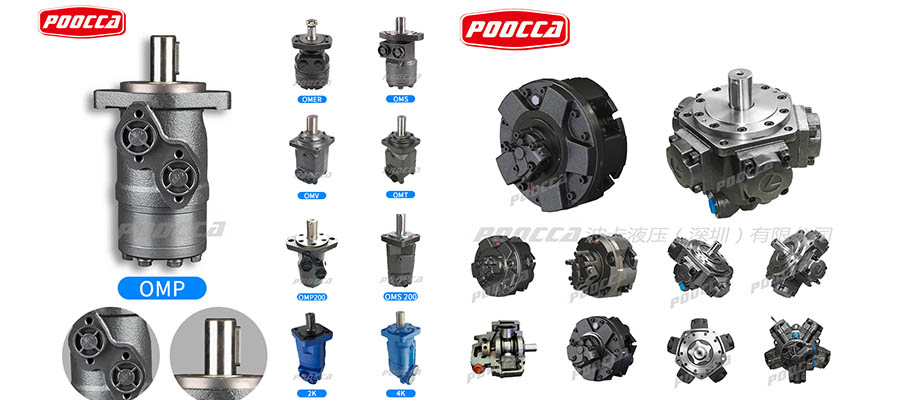Title: How to Size a Hydraulic Motor: The Key to Efficient Power Transmission
Hydraulic motors play a pivotal role in various industries, converting hydraulic energy into mechanical power to drive machinery and equipment. However, choosing the right hydraulic motor size is crucial for optimal performance and efficiency. In this article, we will delve into the process of sizing a hydraulic motor, exploring the factors to consider, the importance of accuracy, and the benefits of a well-matched hydraulic motor for industrial applications.
1: Understanding Hydraulic Motors
Hydraulic motors are devices that transform the pressure and flow of hydraulic fluid into rotational mechanical power. They come in various types, such as gear motors, vane motors, and piston motors, each with its unique characteristics and applications. The selection process revolves around identifying the specific requirements of the system and matching them with the appropriate hydraulic motor type and size.
2: Factors to Consider When Sizing Hydraulic Motors
Load Requirements: Determining the load that the hydraulic motor needs to drive is the fundamental step in sizing. This involves calculating the torque and speed requirements based on the application’s demands.
Operating Pressure: The operating pressure of the hydraulic system affects the motor’s performance. Higher pressures may call for a different motor size to handle the increased load.
Efficiency: Hydraulic motor efficiency varies among different types and sizes. Selecting a motor with high efficiency can lead to energy savings and reduced operating costs.
Duty Cycle: Understanding the duty cycle, which refers to the ratio of operating time to resting time, is crucial for selecting a motor that can handle continuous or intermittent operation.
3: Importance of Accurate Sizing
Sizing a hydraulic motor accurately is critical for several reasons:
Performance Optimization: An appropriately sized hydraulic motor ensures that the machinery operates at its peak performance, leading to improved productivity and reduced cycle times.
Energy Efficiency: Oversized motors can lead to energy wastage, while undersized motors may strain the system, leading to inefficiencies and increased wear and tear.
Cost-Effectiveness: The right-sized motor strikes a balance between initial investment and long-term operational costs, providing the best value for the application.
System Safety: A well-matched hydraulic motor contributes to the overall safety and stability of the hydraulic system, preventing potential failures and accidents.
4: Steps to Size a Hydraulic Motor
Determine the Application Requirements: Understand the load, speed, and torque requirements of the machinery or equipment that the hydraulic motor will drive.
Calculate the Power Requirement: Calculate the required power output based on the application’s demands, considering both continuous and peak power needs.
Select the Motor Type: Evaluate the advantages and disadvantages of different hydraulic motor types to find the one best suited for the application.
Consult Manufacturer Data: Manufacturers provide detailed data sheets and performance curves for their hydraulic motors, allowing for more informed decision-making.
Perform Accurate Calculations: Utilize formulas and software tools to calculate torque, speed, and power requirements accurately.
Apply Safety Factors: Consider safety margins to ensure the selected motor can handle variations in operating conditions and unexpected peak loads.
5: Benefits of Properly Sized Hydraulic Motors
Enhanced Efficiency: Properly sized motors operate closer to their peak efficiency, reducing energy consumption and minimizing heat generation.
Prolonged Lifespan: By preventing overloading and excessive wear, a well-matched hydraulic motor can have a longer operational life, leading to reduced maintenance costs.
Improved Performance: The machinery’s overall performance improves, resulting in better productivity and increased output.
Reduced Downtime: Avoiding motor failures due to inaccurate sizing minimizes downtime and improves overall system reliability.
Selecting the right size of hydraulic motor is a critical aspect of any hydraulic system design. By considering the application requirements, operating conditions, and efficiency factors, engineers and operators can ensure that their machinery operates at its best, achieving high performance, energy efficiency, and long-term reliability. Sizing a hydraulic motor may seem like a complex task, but with careful consideration and accurate calculations, the benefits to industrial applications are substantial, making it a worthwhile investment for any forward-thinking enterprise.
Post time: Aug-01-2023





